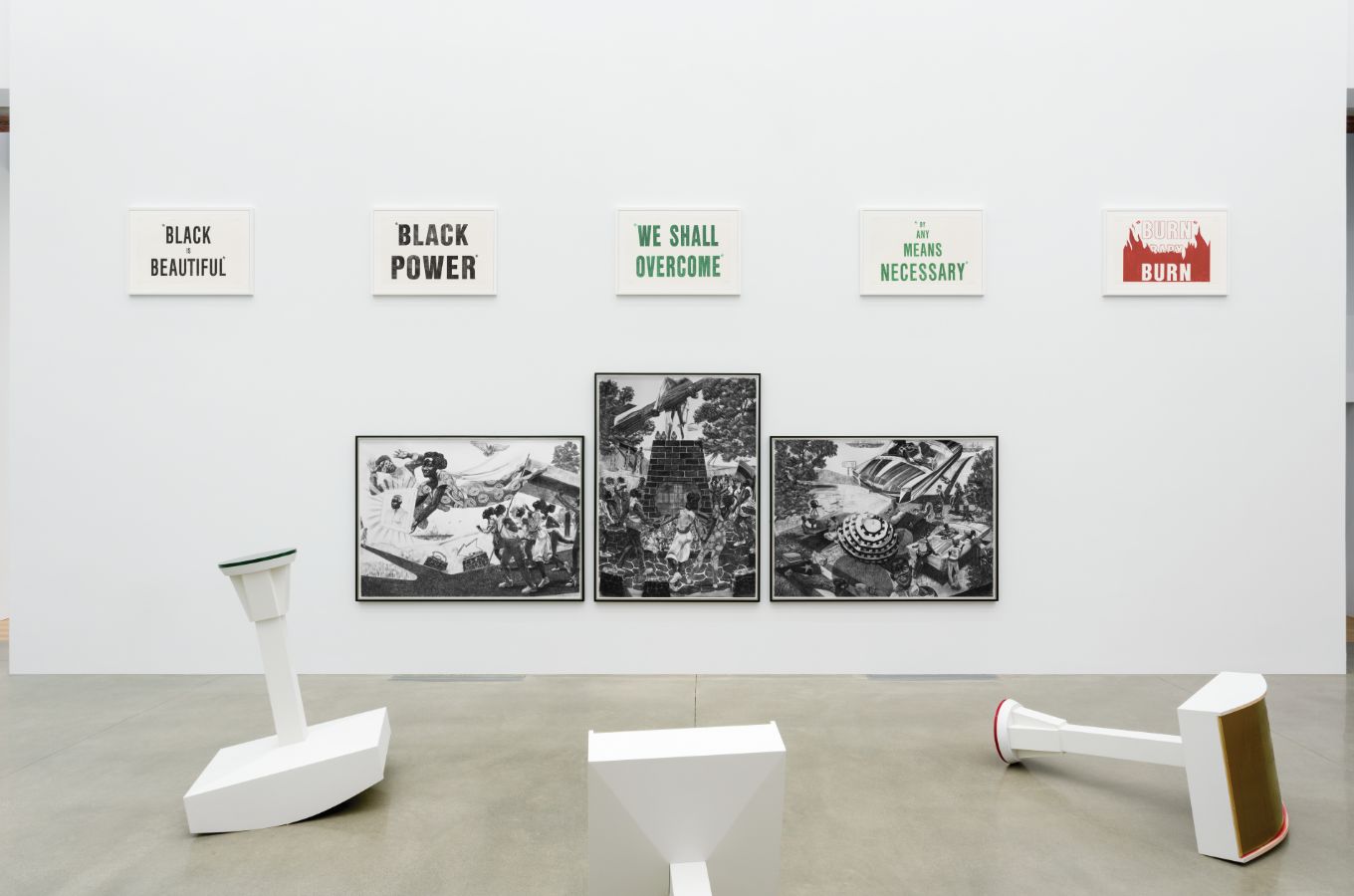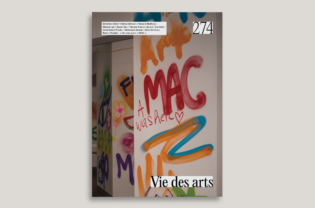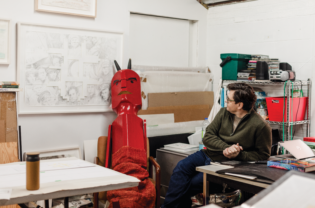Kerry James Marshall – Black in America

During his artist talk at the University of British Columbia, Kerry James Marshall said that although he grew up knowing that he had a gift for making things, it was not his African American identity that first drove him forward but the study of art. He loved to visit museums and was especially drawn to the historical depictions of social and political events, although there was a noticeably inadequate representation of black persons. They were depicted only as servants, aides, or secondary figures, and the predominant focus was on white people. Marshall might have been turned off, rightfully, but, rather than wiping out the vast body of work in which this skew is evident, he found objective value. He consciously sought as an artist to produce works that would also be recognized in the stream of art history, and he set out to be one of the best artists of our time, to come into full view. He believed that what he had to offer, once honed, must rise to significance. The message then followed – black stories told within an exceptional and successful bracketing – because Marshall brought to bear a practice both inspired and authentic. The representation of black civil rights in both historical and contemporary contexts is important if society is to move toward a more equitable future. Marshall’s visual phrases allow for a refreshed version of historical assessment.
Bob Rennie has been collecting and championing Marshall’s work over decades, and Marshall acknowledges the unfettered privilege that private collectors have in exhibiting a chosen body of work. But although he realizes the collector’s advantageous position, he speaks of the difficult task that most artists face when emerging into an established art world. Candidly, he recognizes the importance of having had his work supported, but his artistic mandate is grounded in a higher plane than careerism. It is built on a desire for insight.

Acrylic on canvas, 127 x 95 cm
“Language is like a cracked kettle on which we beat our tunes for bears to dance to when all the time we long to move the stars to pity,” wrote Flaubert, who saw in art a profound opportunity for the realization of noble constructs but also read humans as torpid and insufficient to the task, a sentiment arising from his own inclination toward stoic pessimism. Marshall, too, longs to move the stars, but his phrasing is optimistic and more like the Serbian-Croatian folk saying “Once you catch your bear, it will dance for you.”
Marshall has used his technical and design skills to serve a consistent conceptual tract. The first piece we see upon entering the museum, Untitled (Blot) (2014), is a painting that could be pinned as an abstract work. With mirrored imagery that obviously refers to a Rorschach inkblot, the work is representational because it depicts a psychological test in which a subject’s interpretations of inkblots were recorded over time and then reinterpreted using psychological references and logarithms. Generalizations about black people have perpetuated unjust treatment and been the cause of regrettable legal and social which free association is biased toward the interpreter of the imagery.
A triptych of photographs, Heirlooms and Accessories (2002), has a primarily white cast. In each, a locket on a golden chain sprawls across the surface as if carelessly tossed aside. The photographs in the lockets are white women’s faces taken by Lawrence Beitler. The chalky blur in the background brings the imagery into perception only from a distance. In this work based on the murder of J. Thomas Shipp and Abraham Smith in a spectacle lynching in Marion, Indiana, in 1930, we see the silhouettes of figures hanging as if looking back in time through white bunting, tell-tale remnants of a whitewashed crime.
Black people were once called “coloured people,” a degrading term that is still sometimes used today. Marshall points out the fallacy in the theory that black is an absence of colour. He visually affirms the great complexity of the many shades of black; cool to warm, deep hues and reflective blacks. He does this to metaphorical advantage in Invisible Man (1986), a painted portrait in which the image of the man against night darkness is harkened by a flash of white teeth and the whites of the eyes. A smiling greeting, disarming and welcoming, and the lamplight of two eyes herald the human presence with a positive demeanour, but the black figure on a black backdrop is bordered by a white line framing the black background as if hemming him in. The novel Invisible Man was written by Ralph Waldo Ellison, a black writer and critic whose novel addressing the social and intellectual issues facing African Americans won the National Book Award in 1953. Ellison pointed out that the black man was invisible because it was safest to keep to himself so that he would be less likely to attract notice, which might not serve him well. But he was also invisible because he wasn’t given his due; black persons were denied opportunities and segregated.
The representation of black civil rights in both historical and contemporary context is important if society is to move toward a more equitable future.
Under the pressure of white social and legal systems, the official stamp of approval or condemnation could apply weight that could change personal destinies. In Untitled (Black Power Stamps) (1998), giant stamps similar to those used to stamp the status documents of black Americans command the gallery space. Each bears a golden seal that has been used to print slogans from the civil rights movement, slogans with inherent strength. BLACK POWER and BLACK IS BEAUTIFUL are two of them. The stamps that printed these words are now sculptural, aesthetical, rallying, and inspirational. Marshall’s iteration reclaims power tropes and officialdom to serve a more righteous direction for human rights.
Surrounding this work are three immense paintings titled Untitled (Red) (2011), Untitled (Black) (2012), and Untitled (Green) (2012). These are the colours of the Pan-African flag that affirms the existence of the Black Nation. Red represents the blood that unites all people, black represents black people, and green is for the natural abundance of Africa.
On the fourth wall of this gallery, a triptych of large-scale charcoal drawings, Untitled (Black Empire Suite) (2015), based on the novel Black Empire by George Schuyler, illustrates vivacious scenes of quotidian community life in which intricate narratives are evoked by supernatural actions. A woman flies, seeming effortlessly, as people dance in a circle at the base of a statue. In a convertible car, a man and woman glide skyward, his arm relaxed on the back of her seat, while revelers picnic below. These drawings are imaginary depictions of the vibrant life of African Americans.
In Sculpture (Ibeji) (2006), Marshall turns the traditionally styled African sculpture, standing straight as if at attention, into a walking figure. Arms outstretched as if balancing or clearing a path, a black figure advances.
Marshall is part of a vanguard of contemporary black artists initiating movement to march in rhythm with the great black leaders of the past. His work advances the understanding of that which unites all humankind, just as the red in the flag of the Black Nation reminds us that we are all one, despite colour or creed.
Kerry James Marshall
Collected Works
Rennie Museum, Vancouver
June 2—November 3, 2018






